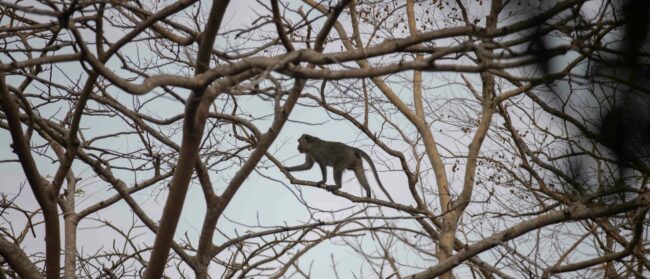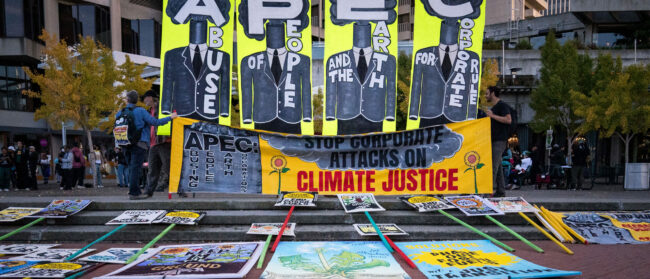The recent flooding that has held much of Cambodia in its deadly grip destroyed more than 190,000 hectares of rice fields and killed at least 247 people. An estimated 1.2 million Cambodians have been affected by the natural disaster that exposed the country’s lack of disaster risk preparedness.
A recent survey by The Global Network for Disaster Reduction ranked Cambodia 61st out of 69 in a survey of countries deemed most vulnerable to disaster.
“Climate change has the potential to push developing countries back into the poverty trap and to undo many achievements that have been made to date with regard to the Millennium Development Goals,” said the United Nations Framework Convention on Climate Change report. “Future vulnerability depends not only on climate change, but also on development pathways.”
According to the United Nations Development Programme, “Climate change is real and happening in Cambodia, and its impacts are unavoidable. It’s not just about floods and droughts, but also about the country’s capacity to cope with the challenges – and its ability to identify and build on opportunities.”While the lack of disaster risk preparedness continues to produce a cycle of poverty and food insecurity across much of Cambodia, some communities are seizing the initiative and taking the first steps to protect themselves.
Samaki, a small village in Battambang province, is one such example. With the help of local NGO Save the Earth Cambodia, this once destitute community is beginning to flourish. The secret is a micro-insurance loan programme that was introduced in 2007 to 60 female-headed, highly vulnerable households.
The programme works as a community-led, owned and managed revolving fund. It taught the community about interest rates and they decided to impose a rate of 2%. They were also responsible for deciding how reserve funds would be reinvested to help the community plan for disasters and, following a vote, the majority decided that reserves generally be spent on building rice stocks.
“The programme is designed to reduce the disaster risks by supporting the community’s livelihoods,” said Akhteruzzaman Sano, Save the Earth’s Cambodia and Southeast Asia coordinator. “The community is made aware of disaster risk reduction (DRR), climate change issues along with their natural risk factors and how they can contribute to climate change prevention through livelihood activities.”
Loans are available at a minimum of $30 and the terms of repayment are based on the borrower’s financial situation. Some pay back as little as 25 cents and since 2007 not one loan has defaulted and the scheme has grown to support 98 households. This represents a vast improvement for a community that has had to previously endure the treasurer disappearing with all the funds from a separate micro-credit project.
Samaki’s micro-insurance loan programme differs from similar, less well-managed schemes because any potential loanee household has to satisfy three crucial criteria. Firstly, a woman has to submit the loan application with her husband present.
This process should engage the entire family and if a man is not open about the family finances and the intended use of the money then the loan is not approved. Secondly, all the children of the borrower’s household must go to school. Finally, the funds must be invested in furthering the family’s livelihood, which must also be climate-friendly – such as home gardening, livestock, feed or supplies.
“Micro-credit is a way of giving agencies money, and many poor people around the world have suffered from such schemes,” said Akhteruzzaman Sano. “Money from the micro-insurance comes in part from the project activity fund and in part from community contributions and savings from members. The community, who have been trained appropriately, solely manages the capital and interests. It operates on their terms.”
The 98 households that have benefited from Save the Earth Cambodia’s pilot programme have shown that community-controlled micro-loans provide a means to better prepare a community for disasters, promote green business, empower the most vulnerable and ensure children attend school.
By following a climate-adapted farming calendar, utilising technical expertise and developing a community disaster risk reduction action plan offered by the organisation and the Department of Agriculture, the village has been given the means to weather the weather.
“This is not just a simple micro-loan programme,” said Akhteruzzaman Sano. “It is so much more than that.”
An example of the scheme’s success comes in the form of Bun Lay, a 67-year-old woman who smiles with a hint of sadness as she shows off her new gold earrings. For her, gold is a bittersweet reminder of a lost life and her smile belies a dark history.
The Khmer Rouge took away all her gold the same day they snatched her husband. He pleaded for the soldiers to allow Bun Lay to keep the one last piece of gold that lay on her wrist, but to no avail. And then he was gone. Life since then had been extremely difficult. After the war, she relocated to Samaki and, until recently, she could only afford to eat once a day, her small frame withering away.
But that woman is now a distant memory. Bun Lay has gained strength since the programme afforded her funds to raise chickens and pigs and then sell some of the animals and the chickens’ eggs for a healthy profit.
She stands fit, belly filled with three meals a day, and oversees a prosperous green business that boasts over 30 chickens. As well as an acceptable daily diet, Bun Lay was able to afford the relative extravagance of her green gold earrings. She thought that buying these small pieces would be a way to honour her husband. They have become a reminder that he isn’t around to share her accomplishments, yet she beams with pride at these small symbols of her success.
With every devastating drought and monsoon season that passes, the need for community disaster risk preparedness increases. While the storm is brewing for the Cambodian government to better cope with climate challenges, the small village of Samaki has taken Mother Earth head on in its fight against erratic weather patterns, and in the process they have found their very own glimmer of green gold.


